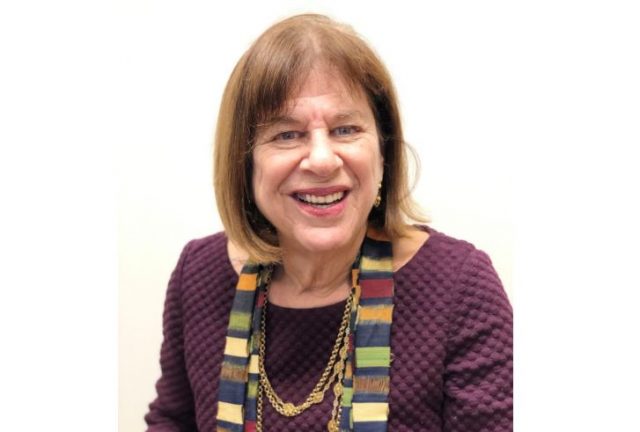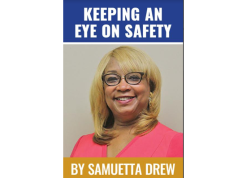By Lucy Friedman
Even before the pandemic shunted them into online learning, many high school students failed to see a connection between their work in the classroom and their real-world futures. The rare exceptions? Young people whose education included a work-based learning experience — and with it a sampling of career opportunities they might never have imagined.
The yawning gap between what high schoolers learn in the classroom and their future employment has serious consequences. Too often the disconnect leads to poor academic performance or, worse yet, disengagement and dropping out.
The result is that we are losing the energy, intelligence and creativity young people could and should bring to New York’s economic recovery.
As one young woman put it in a recent New York Times article, “If it wasn’t for these youth work-force programs, I don’t think I would have realized I wanted to be a mechanical engineer.”
Fortunately, we can take steps to bridge the gap between school and work. And we can do so in ways that recognize that all young people can benefit from work experience, whether they plan to go to college, pursue a credential or career, go to work or some combination.
At a minimum, every high school student should have a work-based learning experience. Better yet would be a proposed three-tiered initiative that would lead to a meaningful — and paid — internship before graduation.
Under such an initiative, high school students would begin the sequence with a course that would expose them to an array of career and workforce opportunities.
Work In Teams
In the second phase, students would participate in a skill-building service- or business-learning project.
The projects might include anything from creating a social media presence for a restaurant to analyzing calls to 311. But each project would be designed to instill important workplace skills, such as how to work in teams and how to follow instructions.
The initiative would culminate in a well-supervised and well-supported internship that would include skills training and at least 150 hours of work at minimum wage. The internships could be in government, in nonprofit organizations or in the private sector. The benefits would be greatly amplified if high school teachers integrated the work-based learning with classroom academics and helped students reflect on their internship experiences.
The time is right. Despite the economic upheaval created by the pandemic, many jobs remain unfilled. The civil unrest of spring 2020 laid bare racial inequities and accelerated the job market’s readiness to embrace young and diverse workers.
Recent advances in neuroscience have provided increasing evidence that students learn best through experience. And career and technical education, or CTE, schools, with their higher graduation and college-going rates than traditional comprehensive high schools, are producing strong candidates.
Importantly, proven work-based learning models already exist. In fact, much of the scaffolding for a work-based learning initiative — and even some of the funding — is already in place.
In New York City, for example, in 2018 more than 71,000 of the 328,000 public high school students took career and technical education courses, including ones in fashion design, pharmacology and accounting. The Summer Youth Employment Program alone will employ 75,000 young people in 2021.
Champions of work-based learning have emerged in business, city government and the school and college systems. In New York City, 27 CEOs of New York’s largest companies have created a new organization to coordinate with educational institutions and ensure New Yorkers have the skills needed for the jobs of tomorrow.
Three-Tier Initiative
Can the proposed three-tier initiative work? To turn this vision into reality will require a significant culture shift. For too long, work-based education has been a disadvantaged stepchild, taking a backseat to traditional classroom learning.
Educators, students, employers, funders and parents need to be persuaded that well-structured work-based programs will lead students to more success in college and/or a career.
Employers pose a similar challenge. They must be convinced that interns will arrive well-prepared and be supported by the adults implementing the program — and be persuaded to make the work meaningful.
City agencies and nonprofit organizations must be encouraged to explore the boundaries of existing resources, tap into new funding streams and work more collaboratively. Philanthropy can play a critical role by supporting the connective tissue that needs to grow between the constituents.
The proposed initiative will cost about $465 million, but a surprising array of resources are already in place — including budgets for summer jobs and CTE schools and investments by nonprofit organizations. It is estimated that New York City spends close to $500 million annually on career exploration, project-based learning and internships; while many of these funds are not fungible, some could be deployed to contribute roughly half of the amount needed to support universal work-based learning.
Some will argue that work-based learning will divert young people from pursuing college degrees. Quite the contrary: Nothing in the proposed initiative would prevent, foreclose or discourage any student from going to college. Indeed, middle-class families arrange for or even pay for internships for their teens in the belief that they strengthen their college applications and help them begin to build their networks.
We must ensure that young people from every community have equitable access to choice-filled and productive lives. To do that will require nothing less than redesigning the traditional education, summer job and youth workforce fields.
The effort is worth it. Let’s offer every high school graduate, whether college-bound now, in the future or not at all, the opportunity to develop the skills and confidence to succeed in careers that exist today — and ones that they can’t yet imagine.
Lucy Friedman completed a visiting fellowship at T





